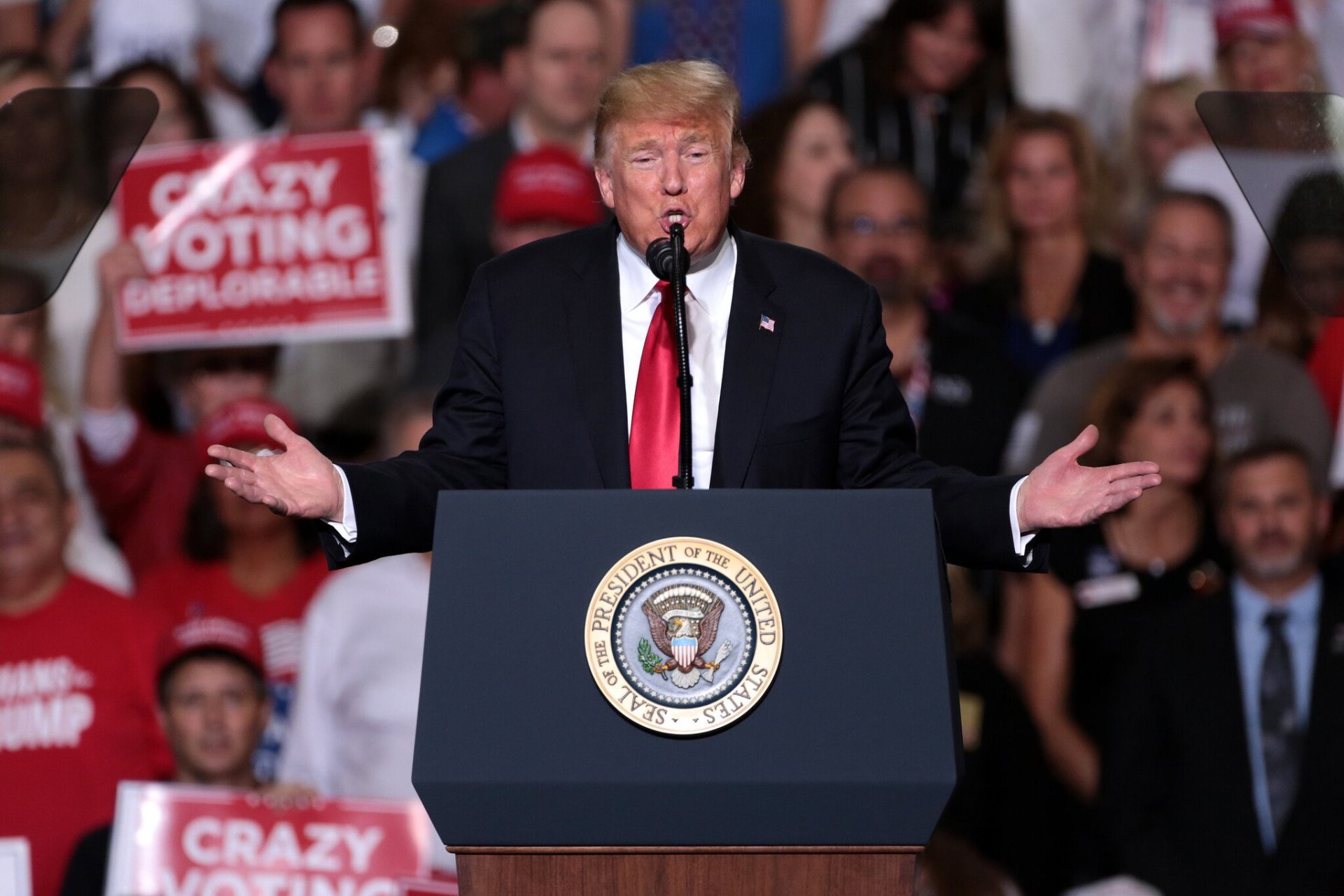
Donald Trump provides an intriguing case for the study of presidential leadership. Despite his lack of conventional credentials for the presidency, he came to the White House with well-honed promotional talents. He was undoubtedly a showman, with abilities sharpened over a lifetime of marketing himself and his brand, including a stint as a successful reality television star.
Once in office, President Trump followed the standard orientation of modern presidents and wasted no time in conducting a permanent campaign to win the public’s support for himself and his policies. On the day of his inauguration, Trump filed for reelection with the Federal Election Commission. Less than a month afterwards on February 18, 2017, he held the first of what were to be dozens of political rallies around the country.
Trump’s predecessors, including great communicators such as Ronald Reagan, Bill Clinton, and Barack Obama, had tried and failed to win the public’s support for their initiatives. Scholars have found little potential to persuasive leadership.
But was Donald Trump an exception? Was Trump, with his unique self-promotional skills, able to improve on this record and win the public’s backing?
The record shows that President Trump, like other presidents, was unable to move public opinion. In the early months of his term, Trump’s focus was principally on replacing the Affordable Care Act—the signature achievement of his predecessor. Yet, the public opposed every version of healthcare reform the president supported. Equally important, the ACA became more popular than ever, and majorities opposed the White House’s efforts to repeal it. Moreover, for the first time since 2007, a majority (60 percent) of Americans felt it was the federal government’s responsibility to make sure that all Americans had healthcare coverage. In other words, the public was moving in the opposite direction of the president and pushing back vigorously against his initiatives.
The next major initiative of the Trump administration was a tax cut for individuals and businesses. Tax cuts are typically not difficult to sell, as people naturally prefer to have more discretionary income. Nevertheless, at no time did the Republican tax proposals obtain the support of a majority—or even a plurality—of the public. People did not accept the president’s narrative that the tax cuts would benefit the typical family, stimulate the economy, and pay for themselves.
Immigration was a defining issue of Donald Trump’s presidency with his emphasis on tough border security and strict enforcement of US immigration laws. Nevertheless, the public did not follow the president’s lead. Instead, majorities of the public opposed core elements of his policy such as decreasing legal immigration, ending the Deferred Action for Childhood Arrivals (DACA) program, deporting all illegal immigrants, banning travel from certain countries, severely restricting acceptance of those seeking asylum, and preventing undocumented immigrations from gaining legal status. Most notably, the public opposed building a wall along the Mexican border as well as the policy of separating children from their parents.
Capping Trump’s failure to win public support was his earning the lowest average level of general job approval of any president in the history of polling. Moreover, this approval was also the most polarized, with the difference among members of the two major parties averaging 81 percentage points.
The president was more successful in persuading his core supporters—those who already agreed with him than in persuading others to adopt new views. Although we cannot know for certain, it appears that his rallies, tweets, and other communications —along with disdain for Democrats and motivated reasoning — kept Republicans in the public in his camp. Trump gave up on convincing Democrats, and by focusing solely on cultivating the zeal of his MAGA base he was able to make it more difficult for congressional Republicans to challenge him.
Nevertheless, his inability to expand public support for either himself or his policies cost him the Republican majority in the House and thus the potential for legislative success in the 116th Congress.
Presidents also go public to demonstrate preexisting public support when that support lies in the constituencies of members of Congress who are potential swing votes. The president focused on moderate Democratic senators from states he won in 2016 and in which he maintained his strongest approval as president. He held rallies in states like North Dakota, West Virginia, Montana, Indiana, and Missouri. He may well have reinforced his supporters’ views, but this solidification seemed to have only limited effect on the senators whose votes he sought to pass major initiatives on health care, taxes, and immigration. Typically, they opposed him.
In the end, opinion was remarkably stable, providing Trump with a solid base of support. Nevertheless, this coalition was not large enough to produce pluralities, much less majorities, in favor of either his policies or his handling of them. Indeed, he often seemed to turn the public in the opposite direction.
Donald Trump was a unique chief executive who came to office with more experience as a self-promoter and public personality than did any previous chief executive. If these personal characteristics were key to leading the public, we should have found him successfully doing so, especially on policies such as tax cuts that on their face should not have been difficult sells to the American people. Yet, his skills and experience were not enough to persuade the public to support his initiatives. The Trump presidency is another example of a president failing to move the American people to support his priority policies, providing further evidence that presidential power is not the power to persuade.

George C. Edwards III
George C. Edwards III is University Distinguished Professor and Jordan Chair Emeritus at Texas A&M University and Distinguished Fellow at Oxford. His latest book is Changing Their Minds? Donald Trump and Presidential Leadership (University of Chicago Press, 2021).






